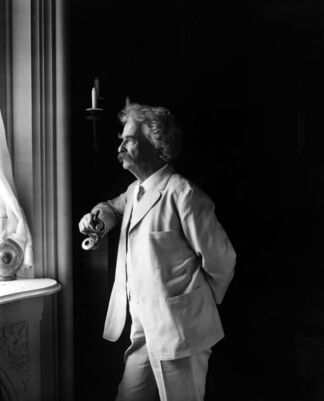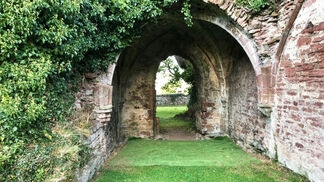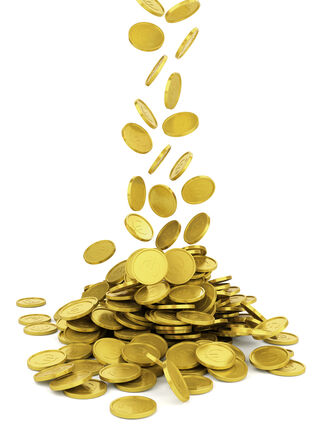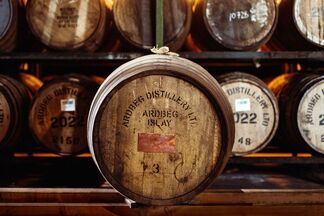
Whisky Through The Ages
How Did Whisky Evolve?
Mark Twain wrote “Too much of anything is bad, but too much good whisky is barely enough”. Maybe this explains why over 40 bottles of whisky are exported from Scotland …. Every second! It is now a 5 Billion Pound export business for Scotland, and is still growing fast. The US became the first 1 Billion Pound market for Scotch Whisky in 2018.
But it was not always as popular as it is today. There have been ups and downs throughout the centuries. In my last Blog entry, I talked about the origins of Whisky. This time, I will talk about the history and how it came to be the drink it is today.
Lets start with an interesting fact: “Uisge beatha”, meaning “water of life” in the native Gaelic, is what whisky was originally called. Through generations of reinterpretation, slang, lazy tongue, and just the basic evolution of language, we derived at the word “whisky”. Try saying it out loud a few times!

When was Scotch Whisky first distilled?
The Early Records
Whisky has been distilled in Scotland for hundreds of years. There is evidence to show that the art of distilling was brought to the country by Christian missionary monks.
The earliest historical reference to whisky is from 1494. It is in the Scottish Exchequer Rolls for 1494, where there is an entry of ‘eight bolls of malt to Friar John Cor wherewith to make aquavitae’. A boll was an old Scottish measure of not more than six bushels. (One bushel is equivalent to 25.4 kilograms). So plenty of Aqua Vitae! The order was given by James IV.
In the beginning, whisky was mostly a monastic pursuit. However, as it became a favored beverage of James IV, Stewart Monarch of Scotland, it spread out among the lands as people emulated their beloved leader. Friar John Cor was a monk at Lindores Abbey, in Newburgh, Scotland. A new distillery has been built at Lindores Abbey and it’s first whisky came of age in 2021. It is the spiritual home of Scotch Whisky and will be the subject of a future Blog entry.
The earliest reference to a distillery in the Acts of the Scottish Parliament appears to be in 1690, when mention is made of the famous Ferintosh distillery owned by Duncan Forbes of Culloden. There is also a reference to distilling in a private house in the parish of Gamrie in Banffshire in 1614. And one of the earliest references to ‘uiskie’ occurs in the funeral account of a Highland laird about 1618.

Scotch Whisky and Duty
How Duties Influenced Legal and Illegal Whisky Production
In 1513, James was felled in a crushing defeat at the Battle of Flodden. Soon after, the English Monarchy took hold of Scotland and Henry VIII dissolved all Scottish monasteries, driving the monks from their homes. Many took their skills as distillers and worked in private estates, farms, or opened local shops where they created Scotch Whisky to earn a living.
Thus began the Scotch Whisky boom–then an illegal substance by the standards of English rule.
The Scottish Parliament in 1644 passed an Excise Act fixing the duty at 2 shillings and 8 pence (now 13p in UK currency) per pint of aquavitae or other strong liquor. For the remainder of the 17th century various alterations were made to the types and amounts of duty collected.
After the Union of the Parliaments in 1707, English revenue staff crossed the border to begin their lengthy attempts to bring whisky production under control. Ninety years later the excise laws were in such a hopeless state of confusion that no two distilleries were taxed at the same rate. Illicit distilling flourished, the smugglers seeing no good reason for paying for the privilege of making their native drink.
A famous Scot, Robert Burns, born in 1759 is remembered as a poet and has his own day (well, night ... Burns Night) on or around the 25th January each year. But Burns was also a tax collector with a particular focus on the whisky industry!
After a lengthy Royal Commission, the Act of 1823 sanctioned legal distilling at a duty of 2 shillings and 3 pence (now 12p) per gallon for stills with a capacity of more than 40 gallons. There was a licence fee of £10 annually and no stills under the legal limit were allowed. The first distillery came into ‘official’ existence in the following year and thereafter many of the more far-sighted distillers came over on to the side of the law.
Developments Over The Years
Some Key Dates and Developments
1600 was the beginning of the clearance of the Scottish from their homes by the English. Many moved to the US where they replicated their whisky making skills and started making Bourbon (although in 1600 it was not called Bourbon). They used corn instead of barley, and also used casks only once.
17th Century was the height of the expansion of the British Empire, including a wave of ship-building to build the British navy for the wars against Spain and France. Oak became scarce and the Scottish Whisky makers needed to look for alternative sources. And found their "cousins" in America who were making Bourbon and throwing casks away after single usage. Problem solved as empty Bourbon casks were shipped over to Scotland. This was also the beginning of Bourbon cask-matured Scotch Whisky.
1725 to 1823 The English Malt Tax increased the number of illicit stills - pushing whisky making up into the valleys where they could not be found, and also resulted in whisky making at night ... giving the name of Moonshine.
1863 The Phylloxera Beetle created havoc in French vineyards and destroyed over 50% of the vines. It disrupted the production of wine and cognac (then the drink of the Gentry in most European countries). The shortages led to a search for alternatives, and the Scots were clever enough to realize that Whisky matured in a Sherry cask tastes somewhat similar to cognac. Fortunately, the British Monarchy agreed and Scotch Whisky became the new Royal drink. A Royal blessing that led to an increase in Whisky sales and production.
1920 Prohibition in America led to a drop of Whisky exports to Americs, affecting the industry quite badly. Until Whisky was declared medicinal in America and could be prescribed by doctors.
1939 The outbreak of World War II gave a new lease of life to the Whisky industry. Churchill is said to have stated that "Our country needs food, Dollars means food, Whisky means dollars". Annual export targets of Whisky to America were agreed and the industry was back on the rise.
Through the subsequent years, whisky has undergone growth and troughs but solely based on the market appeal of the drink. Whisky was predominantly a blended whisky market, blends being made from anywhere up to 20 different distillery products. And the blend market is still the dominant share of market today. From around 1990, single malt whiskies started to become fashionable and have grown steadily in significance since then.
But it was not until 2009 that the Scottish Whisky Association was founded and for the first time in history, regulations and guidelines were formalized for the manufacture of Scotch Whisky.

Whisky Price Rises With Popularity
Some Amazing Values
In 2018, a bottle of Macallan Whisky was auctioned at Christie's in London. It was a bottle from a cask which was filled in 1926. It sold for a whopping $1.2 Million. One year later, a bottle from the same batch sold at auction of $1.9 Million. That equates to around $42,000 per glass. It was part of a collection of 450 rare bottles that sold for a total of $10 Million.
In 2021, a cask of Macallan Whisky which was distilled in 1991 sold at auction for $2.33 Million.
A few weeks ago, in July 2022, a cask of Ardbeg Whisky, distilled in 1975, was sold to a private buyer for $19 Million.
I wonder if John Cor imagined what he was starting back in 1494?!
